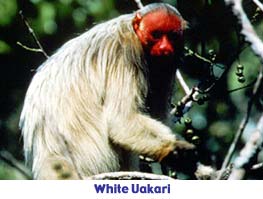Okay, picture this:
You purchase bus tickets (approximately U$A20 apiece) to make the 10 hour trip from
Three days later you wake up early to get in the 4 by 4 that will take you to the mountain and find that the digestive complications that had seemed to subside were back in full force and your throat is sore. Your friend is still fighting congestion and the start of a cough. Despite this, you are tired of sitting around in a hotel room fighting Spanish cable TV, and you want to get started. Bring it on.
The highly acclaimed guidebook you purchased in
The two of you bravely exit the tent the next morning as the sun comes out. You cheer each other up. Today’s climb will finish at base camp, so you only need to drag along day packs. Besides, most of yesterday’s difficulty was because you weren’t used to carrying packs that heavy. Yesterday you did 900m with 50 pound packs and today you climb 1000m (3,281 feet) with maybe 10 pounds. The guidebook claims the ascent will take 4 to 5.5 hours. Why should it take that long? Look at the numbers.
The climb happens to be up a loose scree slope. Translated: take one step lose half a step. The two of you move like sloths. Even at a slow pace your heart is beating in your ears trying to move oxygenated blood through your body as quickly as possible. You force yourself to take calm slow breaths. Five hours later both of you have astounding headaches. Your previous pace is making you dizzy and going slower doesn’t seem to be helping. The optimistic attitude disappears along with your sanity as you gaze up towards the top of Misti. Your friend’s GPS suggests that you are still about 200m from the top, putting you somewhere over 18,400 feet. Your friend calmly reminds you that altitude sickness can be fatal. You may be dumb. Okay, okay. You may be really dumb, but you aren’t stupid. You head down the mountain. It only takes an hour to get back to your 15,748 foot base camp.
You are glad to be back at base camp, but things get a little annoying. Three Americans (two from
Sleep that night is almost unattainable. Despite the best intentions of the 30SPF sunscreen your sun-burned, wind-chapped, sand-blasted face is giving off a pretty good fever. Any respected dermatologist would go into epileptic seizures at the sight. Dinner settles uneasily - a witches brew made of Ramon noodles and a spicy “potato stew” packet not legally sold in other countries.
The final day drops you 1900m to a small town called Chiguata. Morale is still good: we are going home, we aren’t carrying very much water weight, it’s almost all downhill, etc. For some reason you are still relying on the guidebook. The first part of the trail is supposed to be ill-defined…it turns out to be well-defined. The main geographic feature you are looking for is a saddle beside which you should find a broad sandy trail. You find two broad sandy trails. Neither of them are correct and the second eventually disappears leaving you to cross a large ravine that you eventually backtrack around.
Tired of guessing what the book says the two of you decide to head downhill trying to avoid the major ravines (minor canyons) that you may or may not be able to cross. Eventually you find a cattle trail which leads you to the bottom of one of the ravines where miners are working. You ask a man where Chiguata is and he wags his finger indicating that Chiguata is not in the direction you hoped and definitely not as close. He suggests following the ravine, which you do, and eventually leads you to a paved road. Local farm workers estimate that Chiquata is 40 minutes away.
As you approach Chiguata, the 4WD that dropped you off finds you and takes you back to
Wow, thanks for sharing in the pain. Kristine just came to check on me. I told her that this is getting quite long. She was very understanding because those were three very long days. There are some funny stories to tell and should get some nice pictures out of it, but I have more than just a few suggestions on how it could have been done differently! We are currently recuperating and planning for the next adventure. Keep posted.



